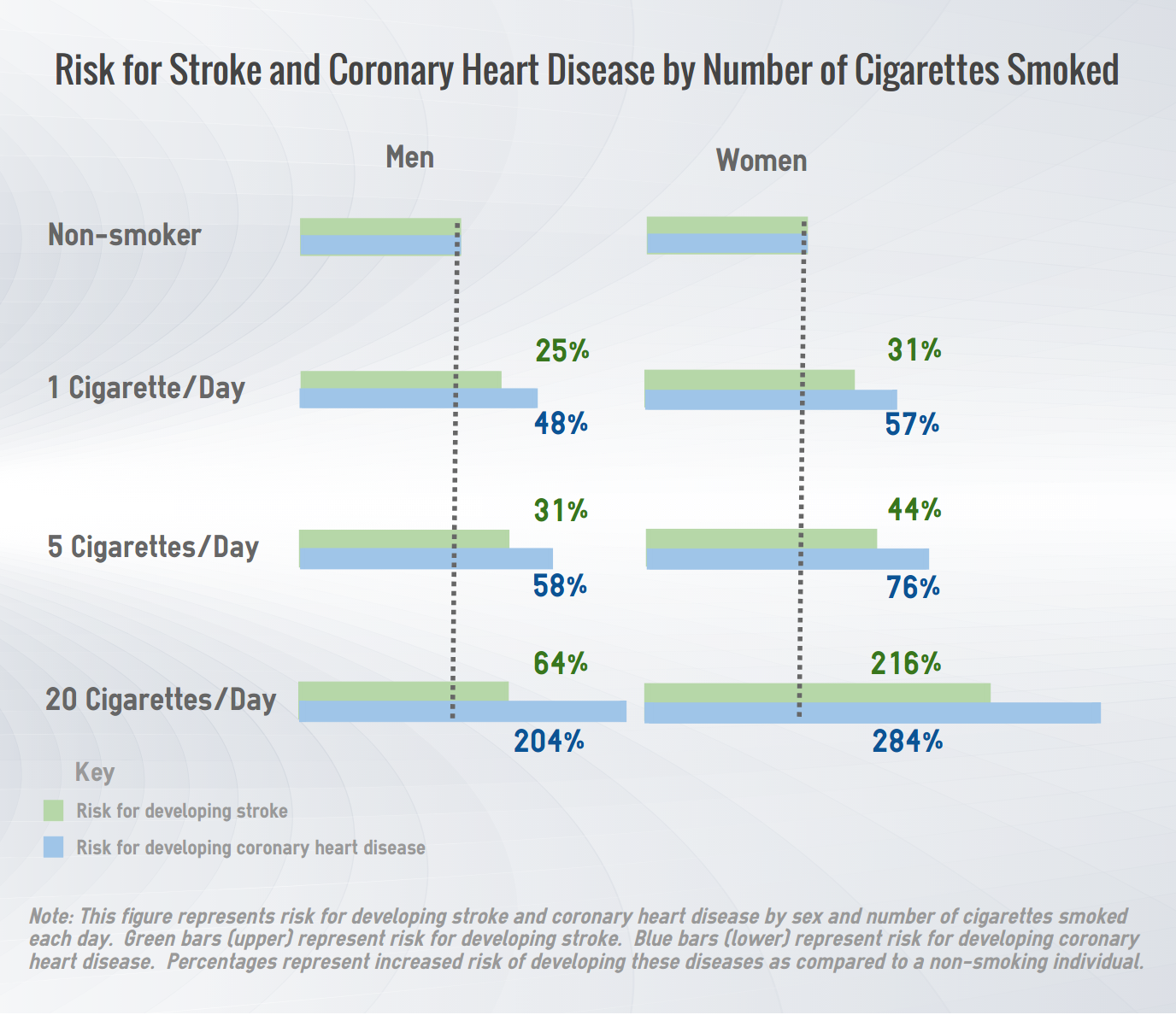ASHES, Vol. 14(2) – Smoking: Is just one cigarette a day dangerous?
Cigarette smoking is related to an increased risk for developing stroke, lung disease, and coronary heart disease. In order to reduce negative health impacts related to cigarette smoking, some interventions advise smokers to reduce the number of cigarettes smoked each day. This week, ASHES reviews a study by Allan Hackshaw and colleagues that explores whether smoking one cigarette each day relates to stroke and coronary heart disease.
What is the research question?
How does low cigarette consumption relate to coronary heart disease and stroke?
What did the researchers do?
The researchers performed a meta-analysis on 55 studies that included a combined total of approximately 5.6 million men and women. They included only studies that (1) reported on cigarette consumption and its relationship to coronary heart disease and stroke; (2) reported at least 50 cardiovascular disease events (i.e., participants who either died or became ill as a result of stroke or coronary heart disease during the course of the study); (3) reported hazard ratios for developing the disease; (4) used a population of generally healthy participants; and (5) either gave results separately for men and women or controlled for gender when these groups were combined. The researchers combined patterns of smoking to create four mutually-exclusive groups: never smoked, smoked 1 cigarette a day, smoked 5 cigarettes a day, and smoked 20 cigarettes a day. The researchers used a regression model to assess whether the number of cigarettes smoked each day related to later development of stroke and coronary heart disease.
What did they find?
Both men and women who smoked cigarettes were more likely than non-smokers to develop both stroke and coronary heart disease. Risk for developing both diseases increased with the number of cigarettes smoked each day. Smoking just one cigarette a day (compared to not smoking) was associated with largest increase in risk for developing these diseases relative to the number of cigarettes smoked per day. (See Figure 1). Female smokers were more likely than male smokers to develop these diseases, regardless of the number of cigarettes smoked.
 Figure. Risk for stroke and coronary heart disease by number of cigarettes smoked. Click image to enlarge.
Figure. Risk for stroke and coronary heart disease by number of cigarettes smoked. Click image to enlarge.
Why do these findings matter?
Although reducing smoking is an important starting point, smoking interventions designed only to reduce cigarette consumption–without encouraging quitting– might not be enough to reduce risk for smoking-related health impacts. Interventions should target quitting as the primary goal for smokers.
Every study has limitations. What were the limitations in this study?
Many of the publications analyzed in this study discussed cigarette consumption in terms of average rates (e.g., one to five) rather than the specific numbers used in this study (i.e., 1, 5, or 20). Individual smoking habits vary across time, so use of a single number might not be representative of actual risk for harm. This study only looked at the negative health impact of coronary heart disease and stroke. A follow-up study designed to include lung cancer as well as other negative health impacts might find different rates of risk for each disease.
For more information:
SmokeFree offers tools and tips quitting and maintaining abstinence from smoking. For additional tools, please visit the BASIS Addiction Resources page.
— Pat Williams
What do you think? Please use the comment link below to provide feedback on this article.